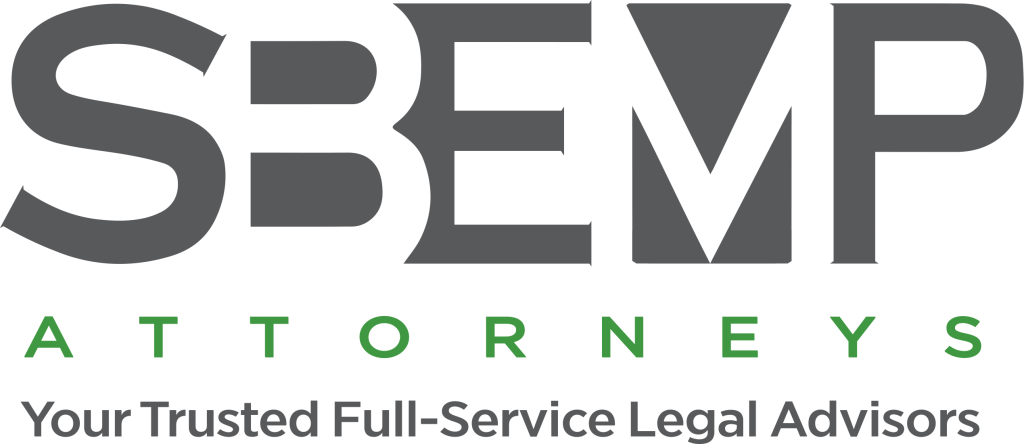 Copyright law plays a crucial role in safeguarding the creative rights of individuals and businesses. Whether you are an artist, a writer, or a musician, understanding copyright can help you protect your work from unauthorized use and infringement. In this blog post, we will delve into the intricacies of copyright law, exploring its significance, the types of works it protects, and how you can navigate the complexities of copyright to safeguard your creative output. Attorneys at SBEMP (Slovak, Baron, Empey, Murphy & Pinkney) law firm provides professional legal advice and services to clients in Palm Springs, Palm Desert, Rancho Mirage, Inland Empire, Orange County, Coachella Valley, and surrounding communities.
Copyright law plays a crucial role in safeguarding the creative rights of individuals and businesses. Whether you are an artist, a writer, or a musician, understanding copyright can help you protect your work from unauthorized use and infringement. In this blog post, we will delve into the intricacies of copyright law, exploring its significance, the types of works it protects, and how you can navigate the complexities of copyright to safeguard your creative output. Attorneys at SBEMP (Slovak, Baron, Empey, Murphy & Pinkney) law firm provides professional legal advice and services to clients in Palm Springs, Palm Desert, Rancho Mirage, Inland Empire, Orange County, Coachella Valley, and surrounding communities.
What Is Copyright and Why Does It Matter?
Copyright is a legal mechanism that grants creators exclusive rights to their original works. If you create something like a song, painting, novel, or film, you hold the sole authority to reproduce, distribute, and publicly display that work. Copyright law aims to encourage creativity by ensuring creators can profit from their work and prevent unauthorized usage. This legal framework empowers artists and innovators while fostering a vibrant cultural landscape by promoting the dissemination of ideas and creativity.
Types of Works Protected by Copyright Law
Copyright law covers a wide range of creative outputs, offering protection to various types of works. These include:
- Literary Works: Books, poems, articles, and any written content are safeguarded.
- Musical Works: Both the musical compositions and accompanying lyrics are protected.
- Dramatic Works: Plays, scripts, and other forms of performance art fall under this category.
- Visual Arts: This encompasses paintings, drawings, sculptures, and photographs.
- Audiovisual Works: Films, television shows, and videos are included.
- Sound Recordings: Specific recordings of music or other audio works are covered.
By recognizing these categories, creators can better identify and assert their rights.
The Scope of Copyright Protection: What Rights Are Granted?
Copyright law bestows several exclusive rights upon the creator of an original work. These rights are essential for the creator to control how their work is used and to benefit financially from it. Specifically, the rights granted include:
- Reproduction: The creator has the exclusive right to reproduce their work, meaning others cannot make copies without permission.
- Distribution: Only the copyright holder can distribute copies of the work, whether by selling, lending, or otherwise transferring ownership.
- Public Display: The creator can control where and how their work is displayed publicly, ensuring it is presented according to their vision.
- Public Performance: This right allows the creator to authorize performances of their work in public, such as a play or musical composition.
- Derivative Works: The copyright holder can create or authorize adaptations, translations, or sequels, maintaining the integrity and intended progression of their original creation.
These exclusive rights enable creators to monetize their work, exercise control over its dissemination, and maintain the quality and originality of their output. However, the law also includes exceptions and limitations to prevent the perpetual monopolization of creative works, thus balancing the interests of creators and the public.
Duration of Copyright: How Long Does Protection Last?
Copyright protection varies depending on the type of work and when it was created. In the United States, the general rule is that copyright for an individual creator lasts for the life of the author plus 70 years. For works with multiple authors, protection extends 70 years after the last surviving author’s death.
For works made for hire, such as those created within the scope of employment or commissioned works, the duration is typically 95 years from the date of publication or 120 years from the date of creation, whichever comes first. This extended duration allows corporations and organizations ample time to benefit from their investments in creative content.
It’s important to note that different rules may apply to older works, depending on when they were created and whether they have been renewed according to previous copyright laws. Additionally, international copyright durations can vary, as different countries may have their own rules and standards.
Understanding the duration of copyright protection helps creators and rights holders manage their intellectual property effectively, ensuring they maximize the value of their works throughout their protected period.
Registering Copyright: Is It Necessary and How to Do It?
While copyright protection is automatic once you create a work, registering it with the U.S. Copyright Office can offer significant benefits. Though not required, registration is highly advisable for several reasons:
- Legal Evidence: A registered copyright provides official proof of ownership, which can be critical in legal disputes.
- Eligibility for Damages: To seek statutory damages and attorney’s fees in an infringement lawsuit, your work must be registered.
- Public Notice: Registration publicly records your claim, acting as a deterrent to potential infringers.
To register your copyright, visit the U.S. Copyright Office’s website and complete the application form. You’ll need to pay a fee and submit a copy of your work. The process is relatively straightforward but can vary in complexity depending on the nature of your work.
Taking these steps can strengthen your legal standing and offer enhanced protections should any disputes arise over your creative rights.
Fair Use Doctrine: Exceptions to Copyright Protection
The Fair Use Doctrine allows limited use of copyrighted material without needing the creator’s permission, under certain circumstances. This legal principle serves as a vital counterbalance to the exclusive rights granted under copyright law, promoting freedom of expression and access to information. Fair use generally applies to uses that are transformative or for purposes such as criticism, commentary, news reporting, teaching, scholarship, or research.
Determining fair use involves a case-by-case analysis of several key factors:
- Purpose and Character of the Use: Courts look at whether the use is commercial or for nonprofit educational purposes. Transformative uses—those that add new expression, meaning, or message—are more likely to be considered fair use.
- Nature of the Copyrighted Work: The use of factual works is more likely to be fair use compared to highly creative works, such as fiction or fine art.
- Amount and Substantiality: Using smaller portions of a work is more likely to be considered fair use, especially if the portion used is not the “heart” of the work.
- Effect on the Market: If the use negatively impacts the market for the original work or its potential market, it is less likely to be deemed fair use.
Navigating fair use can be complicated and often requires a nuanced understanding of these factors. Because interpretations of fair use can vary, consulting a lawyer experienced in copyright law can provide valuable insights and guidance tailored to your specific situation.
Copyright Infringement: Identifying and Responding to Violations
Copyright infringement involves the unauthorized use of a copyrighted work, infringing on the exclusive rights granted to the creator. Common forms of infringement include making unauthorized copies, distributing copies without permission, or publicly displaying a work without the creator’s consent.
If you suspect your copyright has been infringed, it’s important to gather detailed evidence. Document where and how the infringement has occurred, noting the specific ways your work has been used without authorization. This could involve screenshots, recordings, or physical copies of the infringing material.
Once you have gathered evidence, you may consider sending a cease-and-desist letter to the alleged infringer. This letter should clearly state your ownership of the copyrighted material, describe the infringing activity, and demand that the unauthorized use cease immediately. It can also specify the actions you expect the infringer to take, such as removing the infringing material or providing compensation.
If the infringer does not comply with your cease-and-desist request, you may need to take further legal action. Consulting a lawyer who specializes in copyright law can provide valuable guidance on the best course of action. A lawyer can help you assess the strength of your case, represent you in court if necessary, and negotiate settlements to protect your creative rights.
Infringement disputes can be complex and may require professional legal assistance to resolve effectively. By understanding your rights and taking timely action, you can better safeguard your creative works from unauthorized use.
International Copyright: How Protection Works Across Borders
Copyright law extends beyond national borders through various international treaties and agreements, ensuring that creators can protect their works globally. The Berne Convention, for instance, mandates that member countries grant automatic copyright protection to works created by nationals of other member countries without the need for formal registration. Similarly, the Agreement on Trade-Related Aspects of Intellectual Property Rights (TRIPS) establishes minimum standards for copyright protection and enforcement, promoting uniformity across different legal systems.
However, while these treaties provide a framework for international copyright protection, the specific laws and enforcement mechanisms can vary significantly from one country to another. For example, the duration of copyright protection, the scope of fair use, and the process for addressing infringement may differ. Therefore, creators and businesses aiming to distribute their work internationally must navigate these differences to ensure comprehensive protection.
Consulting a lawyer who specializes in international copyright law can be particularly beneficial in this context. Such legal expertise can help you understand the nuances of copyright protection in different jurisdictions, identify potential legal risks, and develop strategies to safeguard your intellectual property effectively. Additionally, a lawyer can assist in enforcing your rights if an infringement occurs in another country, providing valuable support in navigating foreign legal systems.
Ultimately, understanding the complexities of international copyright law and seeking professional legal guidance can empower you to protect your creative rights globally, allowing you to share your work with a broader audience while minimizing the risk of unauthorized use.
Have any legal questions? Contact the Attorneys at SBEMP Law Firm:
For more information or to request a consultation please contact the law offices of SBEMP (Slovak, Baron, Empey, Murphy & Pinkney) by clicking here.
SBEMP LLP is a full service law firm with attorney offices in Palm Springs (Palm Desert, Inland Empire, Rancho Mirage, Indian Wells), CA; Indian Wells, CA; Costa Mesa (Orange County), CA; San Diego, CA; New Jersey, NJ; and New York, NY.
DISCLAIMER: This blog post does not constitute legal advice, and no attorney-client relationship is formed by reading it. This blog post may be considered ATTORNEY ADVERTISING in some states. Prior results do not guarantee a similar outcome. Additional facts or future developments may affect subjects contained within this blog post. Before acting or relying upon any information within this newsletter, seek the advice of an attorney.
